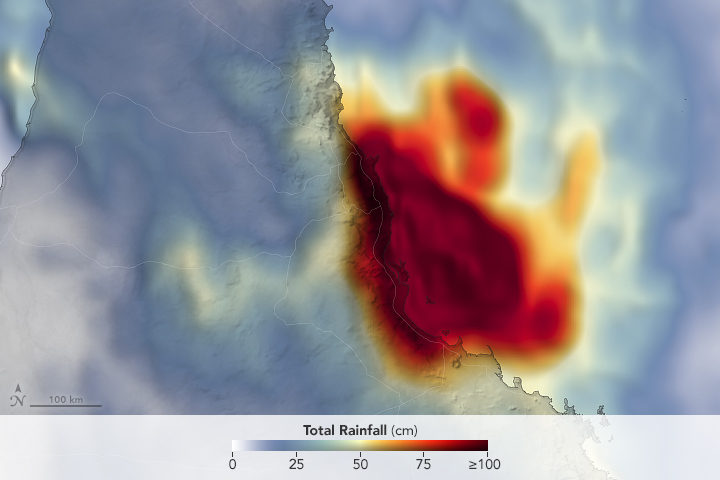Description:
On July 16, 2015, a NASA camera onboard the Deep Space Climate Observatory (DSCOVR) satellite returned a series of images of the entire sunlit side of Earth and the moon from its orbit at the first Lagrange point (L1)—a neutral gravity point between Earth and the sun, which is about 1 million miles (1.5 million kilometers) from Earth. These images from the series, taken by the Earth Polychromatic Imaging Camera (EPIC) between 3:50 PM and 8:45 PM EDT, show the fully illuminated far side of the moon moving over the Pacific Ocean near North America. Also referred to as the “dark side,” this side of the moon is not visible from Earth. The far side lacks the large, dark, basaltic plains, or maria, that are so prominent on the Earth-facing side. The largest far side maria is the Mare Moscoviense [~170 miles (245 kilometers) in diameter] in the upper left quadrant.
As the DSCOVR spacecraft slowly orbits around L1 (always viewing the sunlit side of Earth), the area of reflected sunlight near the center of the globe remains stationary, while the moon crosses the face of the Earth’s surface and Earth appears to rotate from left (west) to right (east). The North Pole is in the upper left quadrant of the globe. The primary objective of DSCOVR—a partnership between NASA, the National Oceanic and Atmospheric Administration (NOAA), and the U.S. Air Force—is to maintain the nation’s real-time solar wind monitoring capabilities, which are critical to the accuracy and lead time of space weather alerts and forecasts from NOAA.





